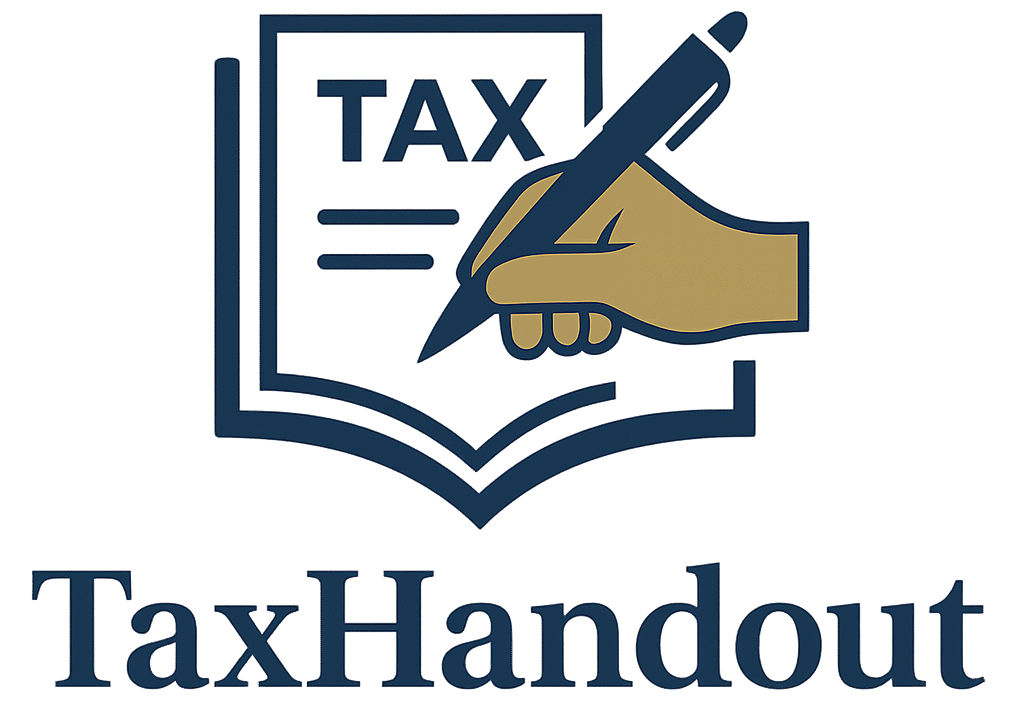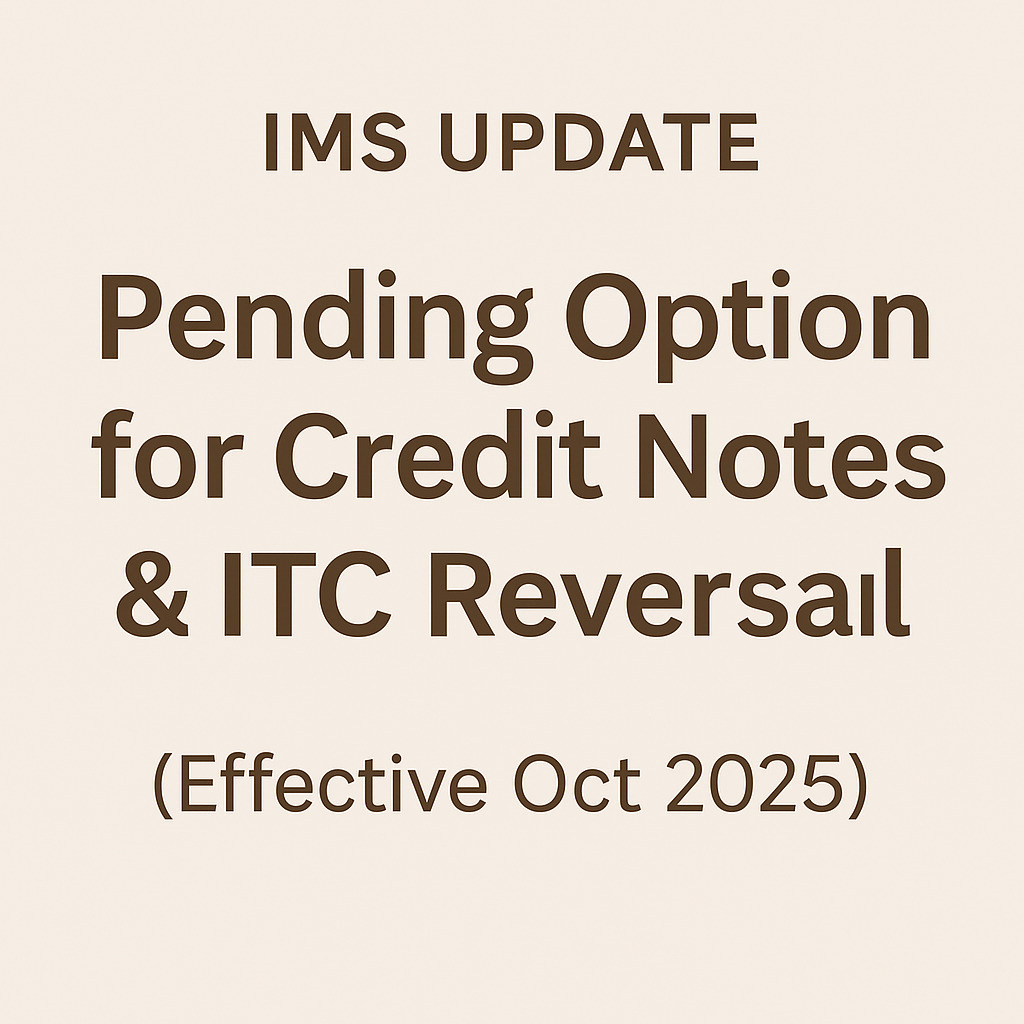1. Introduction
The GST Network (GSTN) has introduced a new feature in the Invoice Management System (IMS) effective from the October 2025 tax period.
This update allows taxpayers to keep Credit Notes as “Pending” for one tax period and also enables them to declare the ITC reversal amount while accepting such records.
This move is expected to resolve many business disputes and make GST reconciliation smoother for both suppliers and recipients.
2. What’s New in the IMS Update?
As per the official GSTN notification dated 17th October 2025, the following key changes have been implemented:
| New Functionality | Description |
|---|---|
| Pending Option for Credit Notes | Recipients can now mark credit notes and amendments as Pending for one month (or one quarter for QRMP). |
| ITC Reversal Declaration | While accepting a record, taxpayers can now specify whether ITC needs to be reduced and by how much (full, partial, or none). |
| Remarks Facility | Taxpayers can now save remarks while taking “Reject” or “Pending” action for better internal records. |
3. Documents Covered Under the “Pending” Option
This new facility is available for the following document types:
- Credit Notes and Upward Amendment of Credit Notes
- Downward Amendment of Credit Notes (where the original CN was rejected)
- Downward Amendment of Invoice / Debit Note** (if the original record was accepted and GSTR-3B filed)
- ECO Documents (Downward amendment) where the original document was accepted and GSTR-3B filed
4. How Long Can a Record Be Kept Pending?
The “Pending” option can be used for only one tax period.
If no action is taken within this time, the record will be deemed accepted automatically by the system.
For Monthly Filers
If the supplier files GSTR-1 for October 2025 on 10th November 2025, then:
- Applicable GSTR-2B Period → October 2025
- Pending Allowed Till → Due date of November 3B (i.e., 20th December 2025)
For QRMP (Quarterly) Filers
If the supplier files GSTR-1 for Oct–Dec 2025 on 10th January 2026, then:
- Applicable GSTR-2B Period → Oct–Dec 2025
- Pending Allowed Till → Due date of Jan–Mar 2026 GSTR-3B (22nd/24th April 2026)
5. New Option for ITC Reversal Declaration
Earlier, when a recipient accepted a Credit Note, the entire ITC was automatically reversed in GSTR-2B, even if no ITC was claimed for the original invoice.
From October 2025, the recipient will see a new prompt while accepting a record:
“Whether ITC needs to be reduced for the selected record(s)?”
Taxpayer can choose:
- YES → Reverse Full or Partial ITC (option to enter the amount manually)
- NO → If ITC was not availed earlier, no reversal will happen
This gives more flexibility and ensures that only actual ITC availed is reversed, reducing errors and disputes.
6. Key Differences – Before vs. After October 2025
| Feature | Before Update | After Update (Oct 2025) |
|---|---|---|
| Credit Note Action | Only Accept/Reject | Accept / Reject / Pending |
| ITC Reversal | Full reversal auto-populated | Taxpayer can declare ITC to be reversed |
| Remark Option | Not available | Mandatory for reject/partial reversal |
| Compliance Flexibility | Immediate action needed | 1 tax period grace |
| Dispute Reduction | Limited | High – system-based transparency |
7. Practical Example
Scenario:
Supplier issues a Credit Note of ₹50,000 dated 15th October 2025 (filed in GSTR-1 on 11th November 2025).
Recipient Actions:
- Marks the Credit Note as Pending in IMS for October 2025.
- On review, finds that ₹30,000 ITC was already reversed earlier.
- On acceptance:
- Selects YES for ITC reduction
- Declares reversal amount ₹20,000 only
✅ Result → ITC reversal in GSTR-2B = ₹20,000 (not full ₹50,000)
This prevents over-reversal and ensures accurate reporting.
8. Effect on Businesses
The new system is expected to:
- Improve supplier–recipient coordination on credit note acceptance
- Simplify reconciliation of GSTR-1 and GSTR-2B
- Avoid double ITC reversals
- Reduce manual intervention and errors
- Provide better control and audit trail using remarks
9. Conclusion
The introduction of the “Pending” option for Credit Notes and declaration of ITC reversal in IMS is a taxpayer-friendly reform.
It empowers businesses with more flexibility, prevents over-reversal, and promotes cleaner reconciliations.
Taxpayers should ensure that their accounting teams are updated about these new features for the October 2025 tax period onwards.



